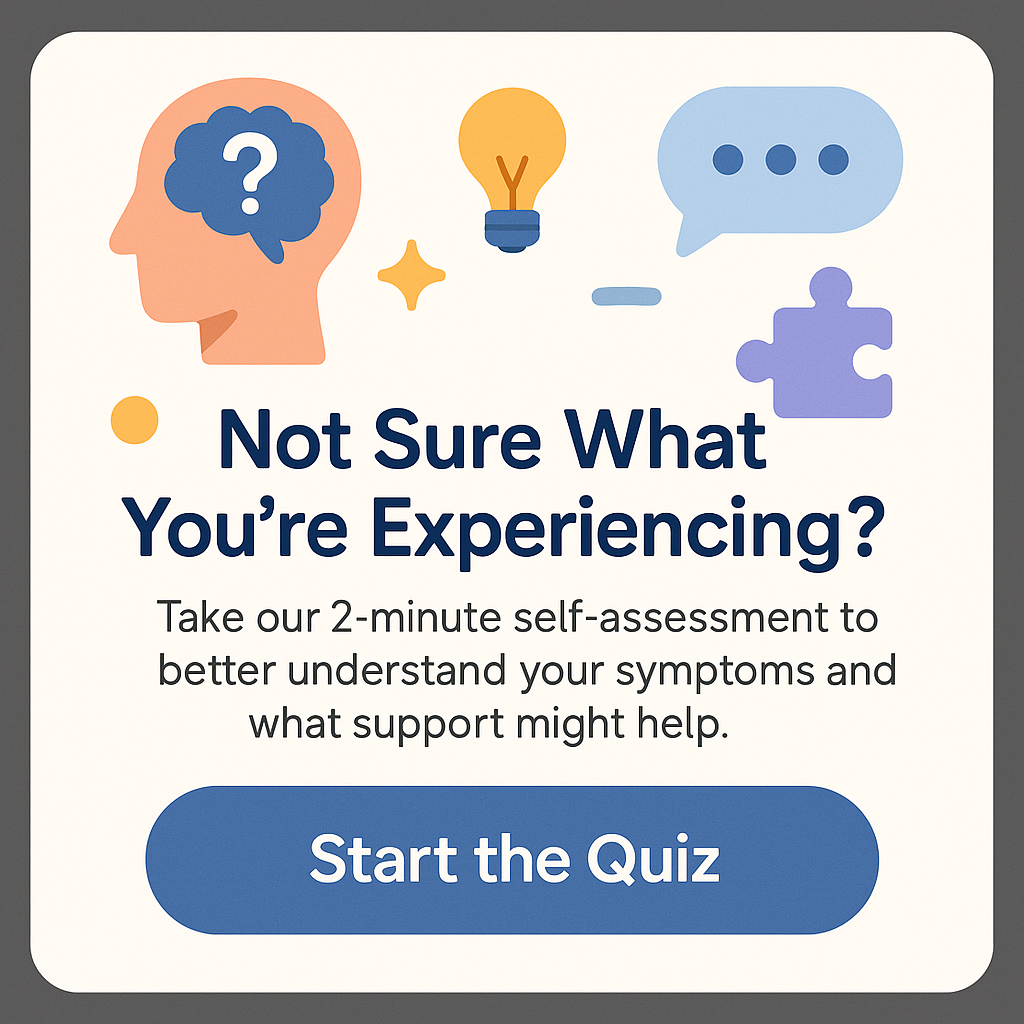What is Autism Mistaken For? Understanding Common Misconceptions
Discover what autism is mistaken for and the common misconceptions that surround this condition. Understanding autism is crucial for dispelling myths and supporting individuals on the spectrum. Many people have encountered situations where autism can be conflated with other psychological and developmental issues, leading to misunderstandings and stigmatization. In this detailed article, we will explore various conditions that are often mistaken for autism, including ADHD, sensory processing disorder, social anxiety, and more.
What is Autism? A Brief Overview
Before diving into what autism is mistaken for, it’s essential to clarify what autism is. Autism Spectrum Disorder (ASD) is a neurodevelopmental disorder characterized by challenges with social interaction, communication, and repetitive behaviors. These symptoms can vary greatly from person to person, making autism a “spectrum” condition. Some individuals may have mild symptoms and live independently, while others may require extensive support throughout their lives.
The symptoms of autism usually appear before the age of three and can persist throughout a person’s lifetime. However, with appropriate support and therapies, individuals on the spectrum can lead fulfilling lives. It’s important to understand that autism doesn’t manifest in a one-size-fits-all manner; each individual’s experience can be unique, which adds to the confusion for many when distinguishing autism from other conditions.
Now, let’s delve into some of the conditions that people often confuse with autism.
ADHD vs. Autism: What is Autism Mistaken For?
Attention Deficit Hyperactivity Disorder (ADHD) is one of the most common conditions mistaken for autism. ADHD is primarily characterized by inattention, hyperactivity, and impulsivity. These symptoms can overlap with autism, leading to potential misdiagnosis.
Many children with autism may display similar behaviors to those seen in ADHD. For example, a child who has trouble focusing on tasks, is easily distracted, and has difficulties sitting still could be perceived as having ADHD rather than autism. However, the underlying reasons for these behaviors may stem from different causes. Children with autism often struggle with communication issues and may not understand social cues or the expectations of classroom behavior, which can lead to inattentiveness. In contrast, an ADHD child may have a completely different set of motivations for their behavior.
This confusion affects how parents, teachers, and clinicians approach the child’s behavior. Misunderstandings can lead to inadequate support for the individual. For example, if a child on the autism spectrum is mistakenly diagnosed with ADHD, they may not receive crucial interventions tailored to help their unique challenges. Understanding the distinctions and similarities between these two conditions is vital for ensuring that individuals receive the right support and intervention.
Another layer of complexity arises because ADHD can co-occur with autism. In such cases, identifying and separating the symptoms of each condition is crucial for providing effective interventions and support geared toward each disorder. The intricacies of these overlapping symptoms can leave teachers and parents feeling overwhelmed.
Sensory Processing Disorder and Autism: Navigating Overlaps
Sensory Processing Disorder (SPD) is another condition that is frequently mistaken for autism. SPD refers to a condition where the brain has trouble receiving and responding to sensory information. This can manifest as either over-sensitivity or under-sensitivity to sensory stimuli, such as sounds, lights, textures, and tastes. While individuals with SPD may exhibit some behaviors that resemble those of individuals with autism, there are notable differences.
For example, a child who cringes at the sound of a vacuum cleaner may be experiencing sensory overload. In contrast, a child with autism may respond differently to the same sound due to communication challenges or behavioral responses that don’t directly stem from sensory issues. Although many individuals with autism experience sensory sensitivities, not every person with sensory processing difficulties is on the autism spectrum.
This is an essential distinction to comprehend. The overlap between SPD and autism can lead to confusion for parents and caregivers, especially when trying to find effective therapies or support systems. Proper diagnosis and understanding of whether sensory responses stem from autism or SPD directly impacts how therapeutic strategies are developed and implemented. Early intervention and tailored therapy approaches can help significantly improve the quality of life for those experiencing significant sensory challenges.
Social Anxiety Disorder: Misinterpretations and Overlaps
Many individuals with social anxiety disorder (SAD) may be misidentified as having autism, primarily due to their difficulties in social situations. Social anxiety disorder typically involves an intense fear of being judged or scrutinized in social settings, which can result in avoidance behaviors. Conversely, individuals with autism may face similar challenges, but their difficulties often stem from a lack of understanding of social cues or communication skills rather than fear or anxiety.
This misunderstanding can complicate the diagnosis and treatment for those experiencing social anxiety. A child with SAD may feel panic at the thought of speaking in class or interacting with peers; however, the reasons that drive these feelings differ significantly from an autistic child who may avoid eye contact or struggle to read facial expressions. The crucial question here is whether the main issue is based on anxiety or a fundamental difference in social interaction abilities.
Addressing these overlapping conditions requires a nuanced understanding of the individual’s experiences. Effective treatment for social anxiety typically focuses on exposure to anxiety-provoking situations, cognitive-behavioral therapy, and relaxation techniques. In contrast, interventions for autism may center on developing social skills, understanding emotional cues, or using assistive communication methods. Accurate assessment can mean the difference between receiving appropriate support and mismanaging symptoms that need targeted intervention.
Learning Disabilities and Autism: A Closer Look
Learning disabilities are another area where misconceptions often arise. Conditions such as dyslexia or dyscalculia can exist alongside autism. Many people may overlook the fact that learning disabilities vary significantly in their presentation but share some overlap with the cognitive and behavioral challenges faced by individuals on the autism spectrum.
For instance, a child with dyslexia may encounter difficulties in reading and processing language, which could lead observers to jump to conclusions that the child is also on the autism spectrum due to their communication struggles. However, these learning disabilities are distinct and require unique approaches and strategies.
Moreover, some children with autism may not exhibit any learning disabilities at all, while others may show strengths and weaknesses in various areas of learning. Importantly, recognizing the fine line between learning disabilities and autism can directly influence educational support and intervention strategies, especially in school settings. Teachers may inadvertently focus solely on one aspect, neglecting the need for individualized education plans that cater adequately to both the learning disability and the autism spectrum disorder.
Educational frameworks need to establish clear pathways and methodologies for addressing the different needs of these students. Assessing and tailoring interventions based on comprehensive evaluations can vastly improve learning outcomes and quality of life.
Conclusion
Understanding what autism is mistaken for is crucial for fostering a supportive environment for individuals on the spectrum. As we’ve explored, autism can often be confused with conditions such as ADHD, sensory processing disorder, social anxiety disorder, and learning disabilities. Each of these conditions carries its own set of challenges and requires tailored approaches for effective intervention. The complexities of diagnosing autism versus these conditions highlight the importance of comprehensive assessments and individualized support tailored to the specific needs of the individual. By encouraging awareness and proper understanding, we can help ensure that those on the autism spectrum receive the right support and interventions, improving their overall quality of life.
As parents, educators, and caregivers, let us work together to dismantle misconceptions and provide the support that individuals with autism truly need. Increasing awareness about what autism is mistaken for not only benefits those on the spectrum but also enriches our broader society by promoting inclusivity and understanding about different neurological and psychological conditions.
FAQs
1. What are some common misconceptions about autism?
Common misconceptions include the belief that all individuals with autism are non-verbal or have severe intellectual disabilities, when in fact, autism is a spectrum disorder with a wide range of capabilities.
2. Can autism co-occur with other conditions?
Yes, autism can co-occur with many other conditions, including ADHD, anxiety disorders, and learning disabilities. A comprehensive evaluation is important for understanding each individual’s challenges.
3. How can I support someone with autism?
Supporting someone with autism can involve understanding their unique challenges, providing clear communication, offering routine and structure, and promoting social interaction in comfortable settings.
4. Is there a cure for autism?
Currently, there is no known cure for autism. However, various therapies and interventions can greatly improve functioning and quality of life for individuals on the spectrum.
5. How can I help reduce stigma around autism?
To reduce stigma, you can educate yourself and others about autism, promote awareness, and advocate for inclusion and understanding in your community. Awareness leads to acceptance.
How Much Does an Autism Diagnosis Cost in Canada?
What is Level 1 Autism? Understanding the Nuances and Support







